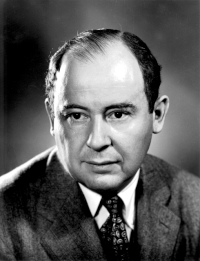
Photo from wikipedia
For a stationary and axisymmetric spacetime, the vacuum Einstein field equations reduce to a single nonlinear PDE in two dimensions called the Ernst equation. By solving this equation with a… Click to show full abstract
For a stationary and axisymmetric spacetime, the vacuum Einstein field equations reduce to a single nonlinear PDE in two dimensions called the Ernst equation. By solving this equation with a Dirichlet boundary condition imposed along the disk, Neugebauer and Meinel in the 1990s famously derived an explicit expression for the spacetime metric corresponding to the Bardeen–Wagoner uniformly rotating disk of dust. In this paper, we consider a similar boundary value problem for a rotating disk in which a Neumann boundary condition is imposed along the disk instead of a Dirichlet condition. Using the integrable structure of the Ernst equation, we are able to reduce the problem to a Riemann–Hilbert problem on a genus one Riemann surface. By solving this Riemann–Hilbert problem in terms of theta functions, we obtain an explicit expression for the Ernst potential. Finally, a Riemann surface degeneration argument leads to an expression for the associated spacetime metric.
Journal Title: Journal of Nonlinear Science
Year Published: 2019
Link to full text (if available)
Share on Social Media: Sign Up to like & get
recommendations!